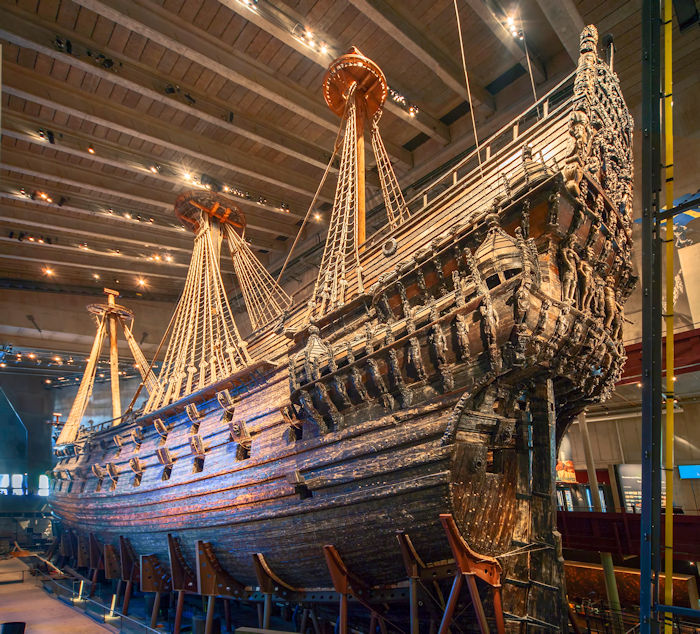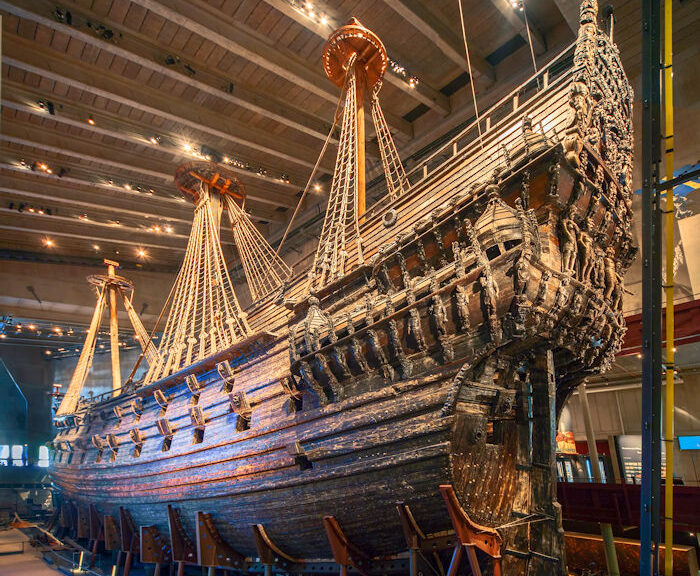DNA Reveals – One Of Sunken Warship Vasa’s Crewmen Was A Woman
When the human remains found on board the Swedish warship Vasa were investigated, it was initially determined that the skeleton designated “G” was a man. New research now shows that the skeleton is actually from a woman.
About thirty people died when Vasa sank on its maiden voyage in 1628. We cannot know who most of them were; only one person is named in the written sources.
When the ship was raised in 1961, it was the scene of a comprehensive archaeological excavation in which numerous human bones were found on board and examined.

“Through osteological analysis it has been possible to discover a great deal about these people, such as their age, height and medical history. Osteologists recently suspected that G could be female, on the basis of the pelvis. DNA analysis can reveal even more,” says Dr. Fred Hocker, director of research at the Vasa Museum, in Stockholm, Sweden.
Since 2004 the Vasa Museum has collaborated with the Department of Immunology, Genetics and Pathology at Uppsala University in Sweden to investigate all of the remains from Vasa and find out as much as possible about each individual.
Initially the project had focused on confirming whether certain bones belonged to specific people. Marie Allen, professor of forensic genetics, has led the work.
“For us, it is both interesting and challenging to study the skeletons from Vasa. It is very difficult to extract DNA from bone which has been on the bottom of the sea for 333 years, but not impossible,” says Allen. She continues, “Already some years ago we had indications that skeleton G was not a man but a woman. Simply put, we found no Y chromosomes in G’s genetic material. But we could not be certain and wanted to confirm the result.”

The result has now been confirmed, thanks to an interlaboratory study with Dr. Kimberly Andreaggi of the Armed Forces Medical Examiner System’s Armed Forces DNA Identification Laboratory (AFMES-AFDIL) in Delaware, U.S.. The AFMES-AFDIL is the American Department of Defense’s laboratory, specializing in human remains DNA testing from deceased military personnel. This organization has established a new testing method for the analysis of many different genetic variants.
“We took new samples from bones for which we had specific questions. AFMES-AFDIL has now analyzed the samples, and we have been able to confirm that G was a woman, thanks to the new test,” says Allen.
For Allen and Andreaggi, the analysis of the Vasa skeletons is a way to develop their forensic methods, which can then be used to analyze DNA in criminal investigations or to identify fallen soldiers.
For the Vasa Museum, the results of the DNA analysis are an important puzzle piece in the museum’s research into the people on the ship.
Dr. Anna Maria Forssberg, historian and researcher at the museum, explains, “We want to come as close to these people as we can. We have known that there were women on board Vasa when it sank, and now we have received confirmation that they are among the remains. I am currently researching the wives of seamen, so for me this is especially exciting, since they are often forgotten even though they played an important role for the navy.”
More results are expected shortly from the new samples. Allen and Andreaggi will be able to say something about how individuals looked, what color their hair and eyes were, and possibly where their families came from.
“Today we can extract much more information from historic DNA than we could earlier and methods are being continuously refined. We can say if a person was predisposed to certain illnesses, or even very small details, such as if they had freckles and wet or dry ear wax,” says Allen in a press statement.
The Vasa Museum’s researchers are currently studying the skeletons from several perspectives, including the personal possessions found with them. Eventually the results will be presented in an exhibition at the museum and a book about the people who died on board Vasa.
